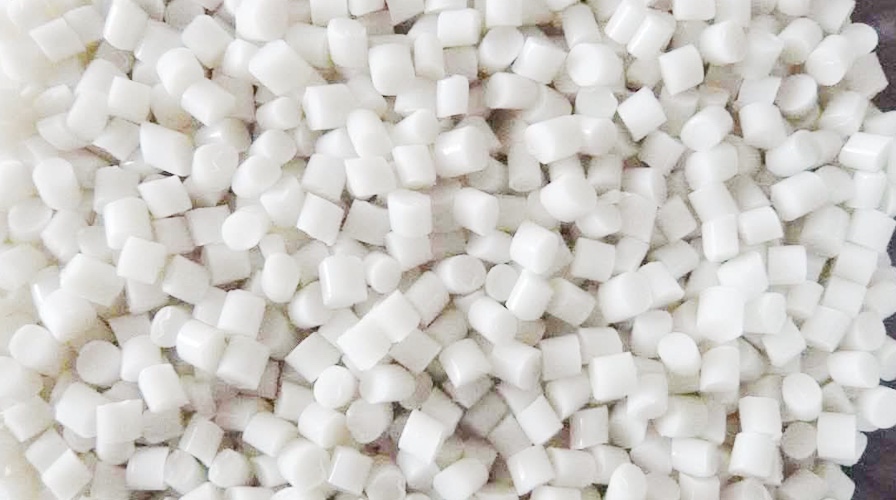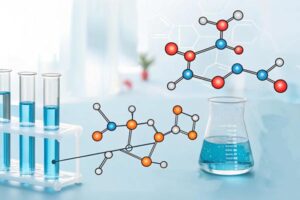Auxiliary additives for biodegradable plastics are an important subsidiary of biodegradable plastics. In recent years, the production and demand of biodegradable plastics have developed rapidly, and the auxiliary industry is also facing opportunities and challenges. This article counts the essential additives for several major types of biodegradable plastics.

a) Crystalline polyester nucleating agent such as polylactic acid
As we all know, the crystallization behavior of crystalline polymers, including crystalline form, crystallinity, crystallization rate, etc., directly determines the performance of the product. The addition of nucleating agent as a simple and efficient way to improve the crystalline properties of polymers has been accepted and paid attention to by more and more practitioners. So far, research on nucleating agents for biodegradable plastics has mainly focused on inorganic materials, organic compounds, salts and polymer materials.
1. Inorganic material nucleating agent plastic additives
Inorganic materials are the most commonly used nucleating agents used in biodegradable plastics such as polylactic acid. The biggest feature of inorganic material nucleating agents is that they have a wide range of sources, are cheap and easy to obtain, and can promote the nucleation and nucleation of biodegradable plastics crystallization. However, due to its poor compatibility in the matrix polymer, it is easy to cause degradation or instability of plastic products and other shortcomings, which limit its application range.
2. Organic compounds
Organic nucleating agents have the advantages of small dosage, quick onset and good compatibility, etc., which are the research hotspots in recent years.
The research on the supporting nucleating agent of biodegradable plastic PLA has been widely carried out, and excellent results have been obtained. The research and development direction of PLA supporting nucleating agent mainly focuses on improving the heat resistance, transparency and crystallization behavior of PLA. At the same time, the high-efficiency, green and harmless nucleating agent is also one of the main directions of future development.
b) Reactive functionalized polymer chain extender additives
Due to PLA, polyhydroxy fatty acid ester (PHA), poly(butylene adipate/butylene terephthalate) (PBAT), polyethylene terephthalate (PET), poly Biodegradable polymers such as butylene phthalate (PBT) are rich in reactive functional groups such as carboxyl and hydroxyl groups, so thermal degradation will inevitably occur during processing and application, which will lead to melt strength and product mechanics decrease in performance.
Therefore, the development and application of reactive functionalized polymer chain extenders is an important way to improve the processing and application performance of shrinkage cluster biodegradable polymers. At present, the research hotspots of reactive functionalized polymer chain extenders are mainly concentrated in the following aspects:
1. Epoxy functionalized chain extender additives
Epoxy functionalized chain extender contains a certain amount of epoxy functional group, which has high activity. It can react with the terminal hydroxyl, terminal carboxyl, and terminal amino groups in the condensation polymer during processing, which can not only improve the molar mass of the resin. It can also reconnect the broken chain, increase the melt viscosity, and improve the performance of the product.
2. Oxazoline type chain extender additives
The monomeric oxazoline refers to the molecule containing two oxazoline groups. The representative species is 1,3-PBO dioxazoline compound. Polymeric oxazoline refers to the introduction of a certain amount of oxazoline groups on the polymer molecular chain through physical and chemical methods.
3. Isocyanate chain extender
Isocyanate chain extenders are mainly divided into polymerization type and monomer type. Isocyanates can easily react with the active hydrogen on the biodegradable polymer chain to produce chain extension or crosslinking effects. The commonly used chain extender is diphenylmethane diisocyanate (MDI). MDI is one of the important raw materials in the polyurethane industry, and it can also be used as a chain extender for polyester biodegradable plastics.
4. Anti-hydrolysis stabilizer additives
Condensed biodegradable plastics (such as PLA, PHA, PBAT, PET, PBT, etc.) are easily hydrolyzed, and adding anti-hydrolysis stabilizers is a common method. The anti-hydrolysis stabilizer can react with terminal carboxyl groups, terminal amine groups and terminal hydroxyl groups generated during polymer hydrolysis to generate stable harmless products and effectively prevent further degradation of chain scission. There are many types of substances that can be used as hydrolysis stabilizers, such as monomeric (polymeric) carbodiimides, isocyanates, oxazoline compounds, epoxy compounds, and other substances that can terminate hydrolysis.
- Carbodiimide type anti-hydrolysis stabilizer additives
Carbodiimide is a compound containing a functional group -N=C=N- in the molecule, and can generally be divided into monomeric carbodiimide and polymeric carbodiimide. The monomeric carbodiimide has the advantages of high activity and fast onset, while the polymerized carbodiimide has good compatibility with plastics and can achieve long-term stability.
- Isocyanate, epoxy, oxazoline and acid anhydride additives
Isocyanate compounds easily react with the active hydrogen on the molecular chain of the biodegradable polymer, play a blocking role, and inhibit the catalytic hydrolysis of the polymer by the active hydrogen.
Epoxy compounds, oxazolines and acid anhydrides can also react with the terminal carboxyl and hydroxyl groups on the polymer molecular chain, thereby improving the hydrolysis resistance of the polymer.
In addition to the end-capping effect of these compounds, some of them can also produce chain extension, branching, and crosslinking effects on the polymer molecular chain. Appropriate addition can increase the melt strength of the polymer, thereby improving the processing and mechanical properties of the polymer.
The anti-hydrolysis stabilizer has the advantages of high efficiency and small addition amount, and can be widely used in polyester biodegradable plastics. However, it should be noted that the anti-hydrolysis stabilizer has its own thermal stability and processing hygiene and safety during polymer processing.
- Acrylic (ACR) melt enhancer additives
Bio-based and biodegradable plastics generally have high brittleness, poor melt strength, and many disadvantages in blown film and foam processing. At present, the application of acrylate melt enhancers is an effective measure to increase and improve the melt strength of bio-based and biodegradable plastics.
5. Reactive functionalized multifunctional auxiliary and coupling auxiliary
Biodegradable plastics cover a wide range, including starch, wood flour, bamboo powder and other organic biomass raw materials filled complexes. The surface modification of organic fillers is critical to the processing and application performance of the products. Coupling agents or reactive functionalized polymerization Physical additives are the essential type of additives for these products.
- Plasticizer additives
1. Citrate ester plasticizer additives
Citrate ester plasticizers are esterified with citric acid as the main raw material. The main industrialized varieties abroad are: tributyl citrate, trioctyl citrate, acetyl tributyl citrate, acetyl tributyl citrate, acetyl trioctyl citrate and so on. Among them, triethyl citrate, tributyl citrate and citric acid acetylation products have been approved by the US FDA as non-toxic plasticizers.
2. Polyethylene glycol (PEG) and other ether esters additives
Polyethylene glycol (PEG), polypropylene glycol (PPG) and other ether ester plasticizers have excellent thermal stability and low volatility, and can be mixed with epoxy and polyester plasticizers. In the process, the molecules will intersperse into the polymer chain segments, increase the movement space of the chain segments, reduce the force between the chain segments, improve the processability of the resin, and give the resin flexibility.
3. New castor oil-derived ester plasticizer additives
Castor oil is a viscous, light yellow, non-volatile, non-drying oil obtained from castor beans. It can be directly used as a plasticizer, or it can be thermally cracked to obtain sebacic acid, which is combined with the corresponding alcohol. Esterification to obtain low temperature resistant plasticizer.
4. Epoxy ester plasticizer additives
Epoxy plasticizer contains epoxy functional group in its structure, so it not only has plasticizing function but also is a good auxiliary stabilizer. Such plasticizers mainly include epoxy neutral grease, epoxy fatty acid methyl ester and epoxy tetrahydrophthalate, which have good thermal and light stability.
5. Degradable polyester plasticizer
Polyester plasticizers are low molar mass polymers prepared by polycondensation of saturated glycols and dibasic acids. Compared with small molecule plasticizers, it has the advantages of low volatility, low toxicity, high temperature resistance, solvent extraction resistance and not easy to migrate.
6. Phosphate esters additives
Phosphate esters are widely used flame-retardant plasticizers. Such plasticizers have excellent flame retardancy, durability, bacteria resistance and weather resistance, and are multifunctional additives.
7. Isosorbide diesters
It is a general trend for green plasticizers to replace traditional plasticizers in the auxiliary industry of biodegradable plastics.
In summary, the development of supporting additives for biodegradable plastics in the future will show the following trends:
- Environmental friendliness and hygiene are more and more valued;
- It is derived from biological resources and has degradability;
- A single additive variety cannot meet the demand, and the integration of additives has become a hot spot;
- The variety of multifunctional additives will be popular.
Although biodegradable plastics supporting additives are diverse and highly targeted, they can bring huge economic and social benefits. However, domestic research is still in its infancy, and excellent supporting additives still need to be imported. There is still a long way to go to develop my country’s biodegradable plastic supporting additives industry.






